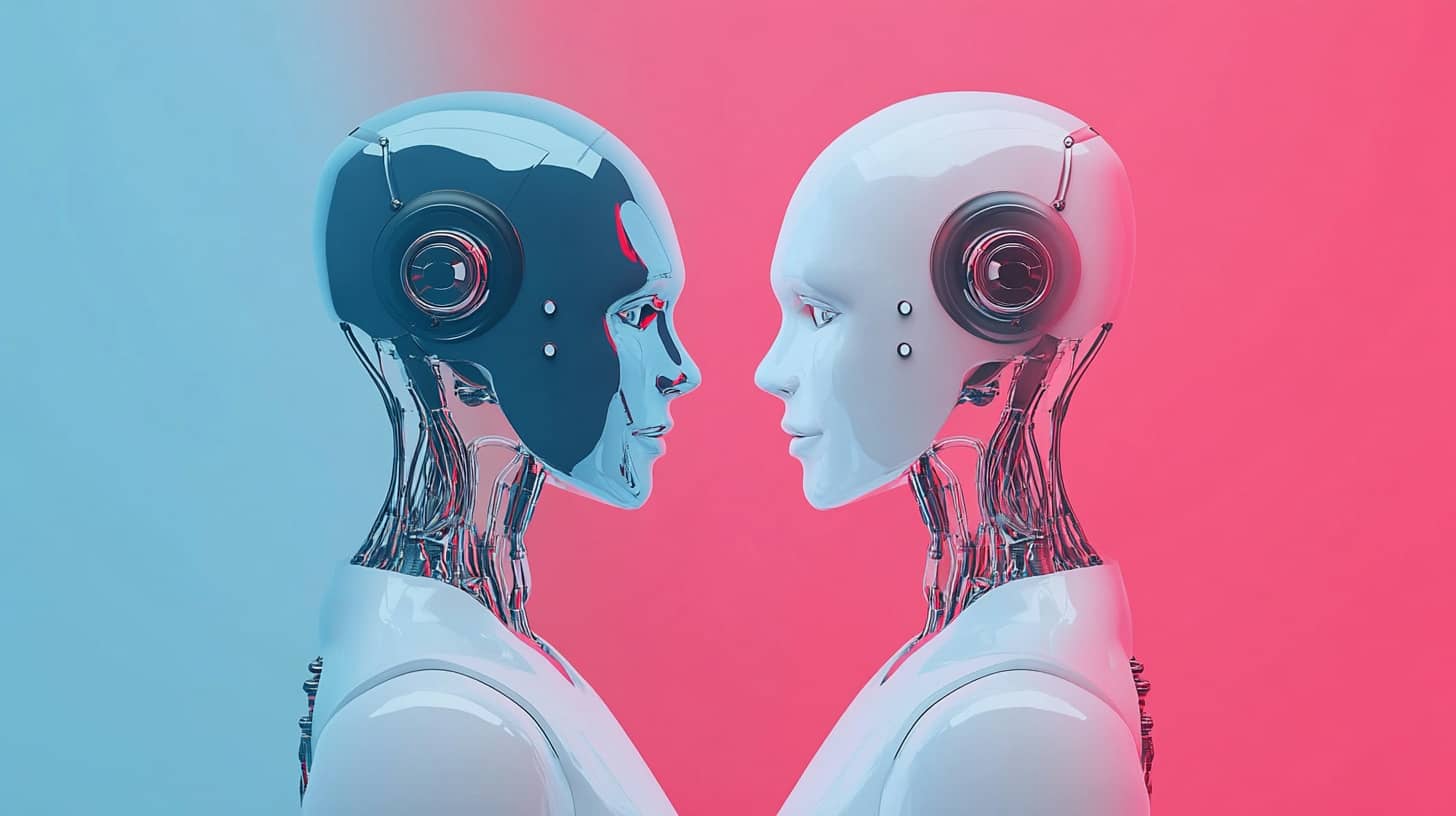The problem isn’t creativity; it’s architecture.
Most creators are caught between bursts of inspiration and stretches of silence, mistaking “activity” for “system.”
That’s where the Content Operating System (Content OS) comes in: a structured framework that turns chaos into cadence, powered by AI.
It helps you capture ideas, organize them into workflows, and distribute them effortlessly across platforms — all while staying true to your voice.
“The secret of getting ahead is getting started. The secret of getting started is breaking your complex overwhelming tasks into small manageable tasks, and starting on the first one.” — Mark Twain
This article breaks down the foundations of a scalable publishing system.
You’ll learn the four pillars of a Content OS, the AI tools that keep it alive, and how to make your creativity run — even when you don’t.
Because true consistency isn’t about showing up every day.
It’s about building a machine that shows up for you.
Most solopreneurs think they have a content strategy when, in fact, they have a habit.
They post, react, and improvise — but nothing compounds.
A few weeks of inspiration lead to weeks of silence. What’s missing isn’t motivation; it’s a system.
A Content Operating System (Content OS) is that missing structure — a way to capture ideas, process them, and publish consistently without chaos.
It’s the difference between posting and publishing.
With AI as your engine, your content becomes predictable, repeatable, and scalable — even on autopilot.
Why most creators fail to scale their content systems
The problem isn’t creativity; it’s logistics.
Most creators treat content like an event, not a pipeline.
Every post is a new battle with the blank page — and that’s why burnout feels inevitable.
The difference between a content habit and a content system
A habit depends on you showing up.
A system ensures the work shows up even when you don’t.
Author James Clear, who studied the mechanics of consistency, explains why systems outperform goals:
“You do not rise to the level of your goals. You fall to the level of your systems.” — James Clear
Creators often chase goals like “post every day” but never build the infrastructure to support them.
That’s like running a business on inspiration alone.
A Content OS turns creativity into an organized sequence — capture, process, and distribute — so ideas never die in drafts., aligning with the foundation outlined in this guide.
The “manual publishing trap”
Manual posting works when you’re small; it collapses once you grow.
You start repeating topics, mismanaging timing, and losing focus on what resonates.
AI fixes this by turning content into data.
Feed your articles or transcripts into ChatGPT or Notion AI.
Ask it to surface patterns — topics you repeat, tones that perform best, and ideas you’ve left unfinished.
Suddenly, your backlog becomes a database of future assets.
“What gets measured gets managed.” — Peter Drucker
Once you can see your content patterns, you can scale them.
That’s when creativity becomes process — not pressure.
How AI shifts creators from chaos to clarity
Most creators drown in tabs and half-written notes.
AI consolidates the noise. It can summarize your voice across platforms, flag inconsistencies, and recommend optimal posting sequences.
It’s like having a strategist inside your workspace, highlighting where effort meets return.
Think of your Content OS as a living organism:
- Memory — captures and classifies ideas.
- Muscle — executes and schedules.
- Metabolism — repurposes and adapts over time.
AI ensures each part feeds the other seamlessly.
Instead of building from scratch each day, you maintain an ecosystem that learns as you do.
“Clarity about what matters provides clarity about what does not.” — Cal Newport
The 4 pillars of an AI-powered Content OS
Every efficient system runs on principles, not luck.
Your Content OS relies on four core pillars: Capture, Organize, Schedule, and Repurpose.
Each one removes friction from a different part of the creative process.
1. Capture — turning ideas into assets
The mind is unreliable storage.
AI helps externalize it.
Use Notion AI or Mem to transcribe voice notes automatically.
Set ChatGPT to tag and cluster those notes by theme or emotion.
That way, when inspiration strikes mid-walk, it doesn’t vanish — it feeds the machine.
“The shortest pencil is longer than the longest memory.” — Mark Batterson
2. Organize — structuring knowledge for retrieval
An idea not filed is an idea lost.
Use a simple folder logic: Capture → Draft → Publish → Repurpose.
AI agents can auto-move ideas along that flow based on progress.
A tagged system means you never start from scratch — you just pull from your library.
3. Schedule — automating consistency
Once your ideas are structured, automation keeps them alive.
Tools like Metricool AI or Later Smart Planner queue and recycle top-performing posts.
AI can even predict when your audience is most responsive and schedule accordingly.
Automation doesn’t remove authenticity; it preserves rhythm so your creativity can breathe, a point reinforced in this Oxford guidance.
“Discipline equals freedom.” — Jocko Willink
4. Repurpose — expanding reach effortlessly
A single idea can fuel multiple platforms.
AI transcription and summarization tools transform one long-form piece into tweets, reels, or newsletter blurbs.
Each version reinforces your message rather than repeating it.
Use this repurposing loop:
- Long-form → short insights
- Short insights → carousel visuals
- Visuals → snippets for stories
You publish once — AI distributes infinitely.
“In the middle of difficulty lies opportunity.” — Albert Einstein
Building your Content OS with AI tools
Systems fail not because the ideas are wrong but because the tools don’t talk to each other.
A true Content OS isn’t a collection of apps — it’s a conversation between them, an idea aligned with this MIT analysis.
Recommended AI stack (Notion AI, Metricool, Descript, ChatGPT)
Start simple. You don’t need 20 platforms; you need four that interlock.
| Function | Tool | Role |
|---|---|---|
| Capture & storage | Notion AI / Mem / Obsidian | Collect and tag ideas automatically |
| Draft & refine | ChatGPT / Claude AI | Turn raw notes into structured outlines |
| Audio & video processing | Descript / Whisper | Transcribe and extract hooks for repurposing |
| Scheduling & analytics | Metricool / Buffer AI | Automate publication and measure impact |
This is your base. Once connected, the system runs end-to-end — from thought to thread, from note to newsletterThis is your base. Once connected, the system runs end-to-end — from thought to thread, from note to newsletter, expanding on concepts introduced in this main article.
“Tools amplify what you’re already doing well — and expose what you’re not.” — Seth Godin
Connecting automations via Zapier or Make
Automation platforms act as the glue between tools.
Set a Zap (or Scenario) that triggers when a new idea enters Notion:
- ChatGPT creates a summary draft.
- Descript pulls audio assets.
- Metricool queues the formatted post.
You’ve just removed 90 % of manual workflow without losing intentionality.
As Peter Drucker once observed,
“Efficiency is doing things right; effectiveness is doing the right things.” — Peter Drucker
Automation is only valuable when you point it at meaningful tasks.
Creating prompts for ‘Content OS intelligence’
AI is only as smart as its instructions.
Turn your most repeated creative steps into prompts you reuse across projects:
Prompt template examples :
- “Cluster these 10 ideas into themes that match my brand pillars.”
- “Draft a LinkedIn post in my tone based on this blog summary.”
- “Identify 3 topics I should revisit from my content archive to increase trust.”
These meta-prompts become the “code” your Content OS runs on.
Each iteration improves its accuracy — just like training a personal assistant.
“If you can’t describe what you’re doing as a process, you don’t know what you’re doing.” — W. Edwards Deming
How to measure and optimize your system
What you don’t measure, you can’t improve.
A Content OS is not a set-and-forget machine — it’s a living organism that needs feedback.
Metrics that matter (reach, depth, resonance)
Don’t obsess over likes. Track metrics that indicate compounding value:
- Reach = how many see it.
- Depth = how long they stay.
- Resonance = how often they share or reply.
AI analytics tools like Metricool Insights or Notion Dashboards can surface these patterns automatically.
“Not everything that can be counted counts, and not everything that counts can be counted.” — Albert Einstein
AI-based audit prompts for content performance
Run a monthly audit like this:
“Analyze my top 10 posts from the last month and summarize what themes drive highest engagement and trust. Recommend 3 content angles I haven’t covered yet.”
This turns data into strategy — not vanity.
AI can even grade your content against your own voice guide to flag inconsistency. That’s how you keep scaling without losing authenticity.
Iterating without burnout
Optimization doesn’t mean working harder — it means building feedback loops that run themselves.
Set a quarterly reflection session to review what automation still requires you and what can be delegated to AI.
As computer pioneer Grace Hopper famously said:
“The most dangerous phrase in the language is, ‘We’ve always done it this way.’” — Grace Hopper
Systems die when they stop evolving.
Your Content OS should evolve with you — smarter each cycle, lighter each week.
A Content OS isn’t about automation for its own sake; it’s about creative clarity.
It lets you spend less time thinking about posting and more time thinking about impact.
Once AI handles the structure, your voice finally has space to grow.
“Perfection is achieved not when there is nothing more to add, but when there is nothing left to take away.” — Antoine de Saint-Exupéry
Your goal is not to create a machine that speaks for you — it’s to build one that protects your consistency so you can speak with clarity.
Because in the end, the smartest content strategy is one that keeps running while you’re busy living.
The modern creator doesn’t need more inspiration — they need better systems.
A Content OS turns chaos into clarity, randomness into rhythm, and effort into efficiency.
With AI as your engine, your ideas become assets that keep working long after you’ve logged off.
“The system is the solution.” — Elon Musk
What used to take days can now happen in minutes.
Automation handles the routine; you handle the resonance.
Your voice becomes consistent not because you push harder, but because your system never stops moving forward.





